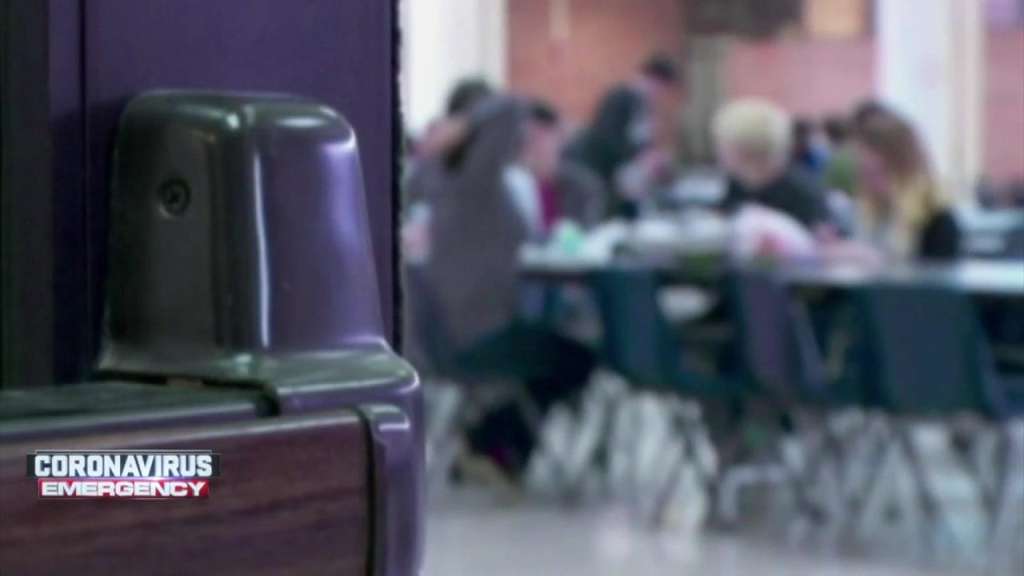(CNN) — New US Centers for Disease Control and Prevention guidelines on education and child care come down hard in favor of opening schools, saying children don’t suffer much from coronavirus, are less likely than adults to spread it and suffer from being out of school.
But the new guidelines posted Thursday do recommend that local officials should consider closing schools, or keeping them closed, if there is substantial, uncontrolled transmission of the virus.
The CDC has been promising new guidelines for more than a week, after demands from President Donald Trump that the agency alter its recommendations for opening schools.
“It is critically important for our public health to open schools this fall,” CDC Director Dr. Robert Redfield said in a statement announcing the updates.
“School closures have disrupted normal ways of life for children and parents, and they have had negative health consequences on our youth. CDC is prepared to work with K-12 schools to safely reopen while protecting the most vulnerable.”
The guidelines, posted online, start with an unsigned statement on “the importance of reopening America’s schools this fall.”
“The best available evidence indicates that COVID-19 poses relatively low risks to school-aged children,” the statement reads.
“Children appear to be at lower risk for contracting COVID-19 compared to adults. To put this in perspective, according to the Centers for Disease Control and Prevention (CDC), as of July 17, 2020, the United States reported that children and adolescents under 18 years old account for under 7 percent of COVID-19 cases and less than 0.1 percent of COVID-19-related deaths,” it adds.
“Scientific studies suggest that COVID-19 transmission among children in schools may be low. International studies that have assessed how readily COVID-19 spreads in schools also reveal low rates of transmission when community transmission is low.”
It notes that there are few reports of children being the driving force of transmission within families. “This is consistent with data from both virus and antibody testing, suggesting that children are not the primary drivers of COVID-19 spread in schools or in the community,” the statement reads.
“No studies are conclusive, but the available evidence provides reason to believe that in-person schooling is in the best interest of students, particularly in the context of appropriate mitigation measures similar to those implemented at essential workplaces.”
The statement says extended school closures harm children. “It can lead to severe learning loss, and the need for in-person instruction is particularly important for students with heightened behavioral needs,” it reads.
The new guidance notes that children often get food, mental health care, speech language therapy and other services at school.
Other guidance takes into account the risk of transmission in schools and from schools. Many medical experts have said it’s not safe to open schools while coronavirus is spreading in a community. The guidelines take note of these arguments.
“If there is substantial, uncontrolled transmission, schools should work closely with local health officials to make decisions on whether to maintain school operations,” they read. “The health, safety, and wellbeing of students, teachers, staff and their families is the most important consideration in determining whether school closure is a necessary step,” the guidance adds.
“Communities can support schools staying open by implementing strategies that decrease a community’s level of transmission. However, if community transmission levels cannot be decreased, school closure is an important consideration. Plans for virtual learning should be in place in the event of a school closure.”
The guidelines suggest that school administrators consider keeping children in cohorts or pods to reduce the risk of spread. They also encourage the use of social distancing, hand hygiene, face masks and other measures to control spread — and incorporating these measures into school curricula.
“There is mixed evidence about whether returning to school results in increased transmission or outbreaks,” the guidelines note, and reference studies done in other countries that have taken various approaches to reopening schools.
“It is important to consider community transmission risk as schools reopen. Evidence from schools internationally suggests that school re-openings are safe in communities with low SARS-CoV-2 transmission rates.”
The guidelines recommend against screening all students for coronavirus. “CDC does not currently recommend universal symptom screenings (screening all students grades K-12) be conducted by schools,” the guidelines read. “Parents or caregivers should be strongly encouraged to monitor their children for signs of infectious illness every day,” they add. “Students who are sick should not attend school in person.”
Trump pressed again Thursday for schools to reopen. “We’re asking Congress to provide $105 billion to schools” in the next stimulus bill, Trump announced at his coronavirus briefing at the White House.
“We cannot indefinitely stop 50 million children from going to school,” Trump said. “Reopening our schools is also critical to ensuring parents can go to work and provide for their families.”
The-CNN-Wire
™ & © 2020 Cable News Network, Inc., a WarnerMedia Company. All rights reserved.

